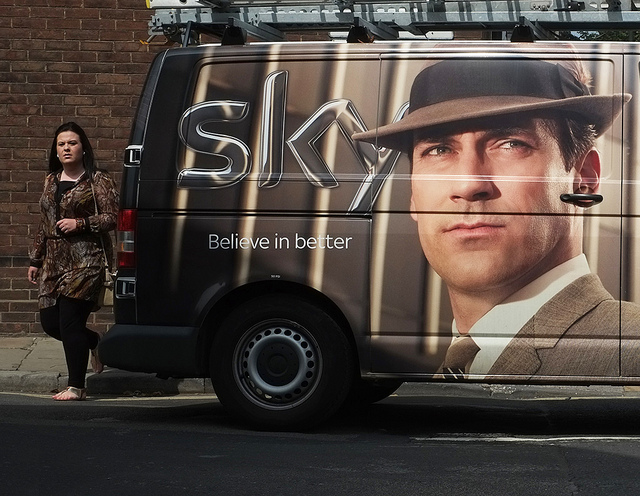Unlock the Magic in Your Story Now
Get the Free 20 questions to Ask Before Launching Your Idea workbook when you sign up for occasional updates.
Get the Free 20 questions to Ask Before Launching Your Idea workbook when you sign up for occasional updates.
What Your Competitors Can’t Copy
 Back in the day our neighbour had to buy her gluten-free products from a tiny and very expensive range of products at the local pharmacy. If you wanted organic products you trekked across town to a speciality store. Not so today.
Back in the day our neighbour had to buy her gluten-free products from a tiny and very expensive range of products at the local pharmacy. If you wanted organic products you trekked across town to a speciality store. Not so today.
As demand drives supply, competitors enter new markets and what was once a tiny but healthy monopoly can become a race to stay ahead of the competition. And so we look for ways to give customers reasons to choose us. We invite them to compare with a ‘this over that’ argument.
The best brands thrive because they are beyond compare. The loyalty and love of their customers is not just determined by what’s inside the package (quality is a given). The best brands win by creating meaning and a connection with their customers in ways that their competitors could never hope to copy.
Brand affinity, trumps brand awareness every time.
Share this article
3 Questions To Help You Find Your Niche
filed in Entrepreneurship, Storytelling
 Look in the jewellery shop windows in any western city and you’ll notice the same trends—rings, bracelets and necklaces designed to appeal to what most people like the look of. Jewellery designer Megan Auman found her niche by marrying her talents as a metalsmith and designer, to create pieces that would change how a particular kind of woman felt, (not just how she looked) when she put them on.
Look in the jewellery shop windows in any western city and you’ll notice the same trends—rings, bracelets and necklaces designed to appeal to what most people like the look of. Jewellery designer Megan Auman found her niche by marrying her talents as a metalsmith and designer, to create pieces that would change how a particular kind of woman felt, (not just how she looked) when she put them on.
Three Questions For You
1. What do the people you serve want and need?
You must get to know them almost as well as you know yourself.
2. How does the value you create best intersect with the worldview and desires of those people?
Understanding this helps you to make something people want, instead of having to make people want something.
3. What brings you the most joy?
There are a million and one things you can do, what is it that you must do?
Image by Nefatron.
Share this article
Making Things People Want
filed in Marketing, Storytelling, Strategy
 We are buying fewer pairs of jeans and more yoga pants, eating less gluten and more coconut oil. Trends are not simply a shift in behaviour, they are a sign of a change in the story we want to believe about ourselves.
We are buying fewer pairs of jeans and more yoga pants, eating less gluten and more coconut oil. Trends are not simply a shift in behaviour, they are a sign of a change in the story we want to believe about ourselves.
When you develop a product, service or platform it’s not enough to consider how it tastes, works or looks, you have to think about how it will make your customer feel in the context of who she wants to believe she is. Even when the Athleta customer is not practicing yoga, she wants to feel like she’s akin to the kind of person who does.
What kind of person does your customer aspire to be?
How does that person act?
How can what you create help her to be more of who she wants to be?
We make things people want when we understand how what we make wraps around their story.
Image by Matt Madd.
Share this article
Nothing And Everything

“Have you got far to go with those?” the assistant asked, while looking me squarely in the eye, as he was deciding how best to pack my groceries.
It was the tiniest gesture, nothing much, and yet it was enough to stop me in my tracks, because it’s not what we’ve come to expect. Nobody does that these days—well hardly anybody.
This wasn’t part of a script dictated by a boss. It was one person’s way of making his work meaningful and his interactions with every customer count. He wasn’t thinking about what to do when he knocked off work at 6pm. He was right there with me, in the moment—believing that his work mattered.
Your work is a gift. The way you go about it, the story you tell (and live) can change someone’s day, and maybe yours too.
Image by Paul Swee.
Share this article
The Business You’d Want To Visit
 Matthew Weiner, the creator of the wildly successful TV series Mad Men carried that script around with him for four years, shopping the idea to whoever would listen. During that time people asked him if he was aware of how uncommercial his idea was before they rejected it. The reason the folks at AMC agreed to do the show was because it was the kind of show they would want to watch.
Matthew Weiner, the creator of the wildly successful TV series Mad Men carried that script around with him for four years, shopping the idea to whoever would listen. During that time people asked him if he was aware of how uncommercial his idea was before they rejected it. The reason the folks at AMC agreed to do the show was because it was the kind of show they would want to watch.
Build the business you’d want to visit.
Design the product you’d love to use.
Craft the email you’d be thrilled to receive.
Write the book you’re longing to read.
Create the community you’d crave to belong to.
Deliver the speech you’ve always wanted to hear.
If you can put that level of love into your work, you’re already one step ahead of the competition.
Image by Allan Rostron.
Share this article
Why Did You Win?
 Even when our innovation and marketing succeeds, we don’t always take the time to understand what’s working so that we can replicate it. We gratefully welcome and respond to prospective new customers every day, often without knowing how and why they showed up.
Even when our innovation and marketing succeeds, we don’t always take the time to understand what’s working so that we can replicate it. We gratefully welcome and respond to prospective new customers every day, often without knowing how and why they showed up.
Five questions to get you started
1. How did your last customer find you?
2. What was she was looking for when she found you?
3. Why did she choose you?
4. What problem is she hoping you can help her to solve?
5. What part of the promise you made does she most want to believe?
The next sale comes from understanding how you made the first one.
Image by Geoffrey Forment.
Share this article
Your Most Important Customers
 The most important customers (listeners, audience members and followers) are not the ones you gain, but the ones you keep. It’s all very well to measure how many people have signed up or walked through the door, quite another to understand who is really listening and what they care about. Numbers and foot traffic are nice to have and even nicer to talk about, but they mean nothing without engagement. Reach is not the same as thing at all as impact.
The most important customers (listeners, audience members and followers) are not the ones you gain, but the ones you keep. It’s all very well to measure how many people have signed up or walked through the door, quite another to understand who is really listening and what they care about. Numbers and foot traffic are nice to have and even nicer to talk about, but they mean nothing without engagement. Reach is not the same as thing at all as impact.
And the flip side is that the customers you keep are not just choosing you—you are also choosing them. The fact that you make this choice means you get to do your best work and not the watered down version for people who might care some day.
The foundation of your business is built on today, not some day and your work is too important to be diluted so that it appeals to everyone. So decide who for and who you for, be for them and not just for anyone.
Image by Nuria Fatych.
Share this article
Why Most Marketing Fails
filed in Marketing, Storytelling, Strategy
 It’s hard to communicate your value if you don’t know what the customer’s definition of value is. Most marketing fails because the marketer doesn’t understand the story his customer wants to believe, before he tells the story.
It’s hard to communicate your value if you don’t know what the customer’s definition of value is. Most marketing fails because the marketer doesn’t understand the story his customer wants to believe, before he tells the story.
So the real estate agent starts describing the proximity to great schools, without knowing if the couple has any children and the balloon seller brings one of each balloon—just in case.
Before you explain where you’re coming from find out where your customer wants to go.
Image by Auntie P.
 The vibration you feel when you plug your iPhone in to charge—that’s marketing. The texture of the sheets as you pull back the covers of a hotel bed, jazz playing on a good stereo at the cafe, the ease with which the milk carton opens, daring to have an
The vibration you feel when you plug your iPhone in to charge—that’s marketing. The texture of the sheets as you pull back the covers of a hotel bed, jazz playing on a good stereo at the cafe, the ease with which the milk carton opens, daring to have an  Dear Business Owner who delivered a one star service experience,
Dear Business Owner who delivered a one star service experience,